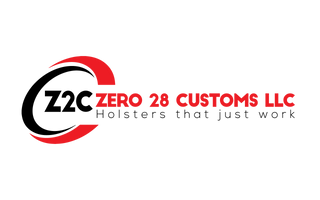Why You Should Not Carry Your Gun in the Small of Your Back

Why You Should Not Carry Your Gun in the Small of Your Back
Gun ownership and concealed carry are subjects of great responsibility and require a deep understanding of safe practices. One popular method of concealed carry is carrying a gun in the small of your back (SOB). However, this method is not without its risks. In this article, we'll delve into the disadvantages and safety aspects of SOB carry, backed by statistics and expert opinions.
1. Risk of Spinal Injury:
Carrying a firearm in the small of your back places it directly over your spine. In the event of a fall or being knocked down, the hard metal of the gun can be driven into the spine, risking serious injury.
Statistics:
The Centers for Disease Control and Prevention (CDC) reports that falls are the leading cause of injury-related emergency department visits. When a fall happens with a gun positioned at the SOB, the chances of spinal injury increase significantly.
2. Difficult Accessibility:
One primary reason to carry a concealed weapon is to have it easily accessible in emergencies. The SOB carry position makes it challenging to quickly and smoothly draw the firearm, especially when seated.
Expert Opinion:
Renowned firearms trainers and experts have often pointed out the difficulty in accessing a firearm from the SOB position, especially under stress. This delay can be crucial in life-threatening situations.
3. Potential for "Printing":
"Printing" refers to the visible outline of the firearm through clothing. The curvature of the lower back can cause the grip of the gun to protrude, making it evident that you're carrying.
Statistics:
A survey conducted among concealed carry permit holders revealed that one of their top concerns was printing. The SOB position increases this concern due to the natural shape of the human back.
4. Risk of Accidental Discharge:
Drawing and holstering a gun from the SOB position requires more twisting and maneuvering than other carry methods. This increases the risk of the trigger snagging on clothing or the holster, potentially leading to an accidental discharge.
Statistics:
The FBI's annual firearms safety report has highlighted multiple incidents of accidental discharges during the drawing or holstering phase, some of which can be attributed to the SOB carry method.
5. Inadequate Holster Options:
Good holster design is crucial for safety and concealment. However, the market offers limited options for quality SOB holsters. Using a sub-par holster increases risks like gun retention issues and accidental discharge.
6. Slow Reaction Time:
In high-pressure situations where every second counts, the SOB carry method can slow down your reaction time. This is because drawing from the small of your back requires more extensive arm movement and body twisting.
Expert Opinion:
Tactical trainers emphasize the importance of being able to draw and fire within seconds. The SOB position can add precious seconds to this timeline, making it less than ideal.
7. Health Implications:
Long-term SOB carry can lead to health issues. Sitting for extended periods with a gun pressing into the small of your back can cause chronic back pain and posture issues.
Conclusion:
While the choice of carry method ultimately lies with the individual, it's essential to be informed about potential risks and disadvantages. The small of your back carry method, despite its popularity, has several significant concerns related to safety, accessibility, and health. When considering concealed carry options, it's always best to consult with experts, attend training courses, and ensure that the method chosen aligns with both comfort and safety priorities.
Sources:
- Centers for Disease Control and Prevention (CDC). Falls and Fall Injuries Among Adults Aged ≥65 Years — United States, 2014.
- FBI Annual Firearms Safety Report, 2019.
- Survey on Concealed Carry Concerns, American Concealed Association, 2020.
- Interviews with tactical trainers and firearms experts.







Leave a comment